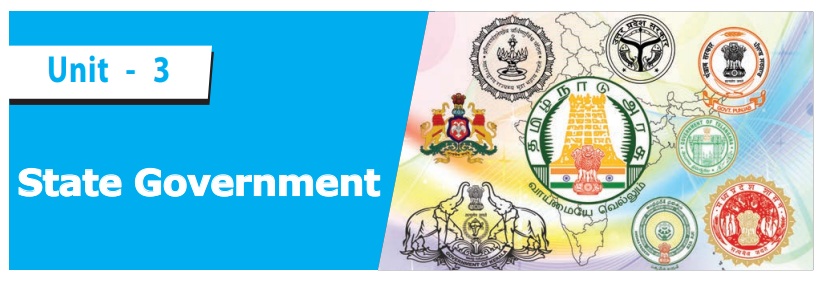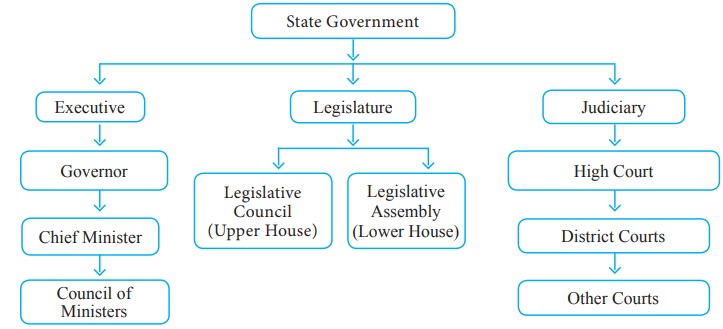Civics | Social Science - State Government of India | 10th Social Science : Civics : Chapter 3 : State Government of India
Chapter: 10th Social Science : Civics : Chapter 3 : State Government of India
State Government of India
State Government

Learning Objectives
• Students acquire knowledge about the structure of the State
Government
• To understand the powers and functions of the Governor, Chief
Minister, Ministers and Speaker
• To know about the State Legislature
• Student understand the functioning of the judicial system in
the State
Introduction
The
Constitution of India envisages for a federal government, having separate
systems of administration for the union and the states. There are 28 states, 9
union territories and one national capital territory known as Delhi in India.
The constitution contains provisions for the governance of both the union and
the states. It lays down a uniform structure for the State Government, in part VI
of the constitution from Article 152 to 237, which is applicable to all the states,
The structure of the State Government, as formed in the Centre, consists of
three branches. These are the Executive, the Legislature and the Judiciary.

Related Topics